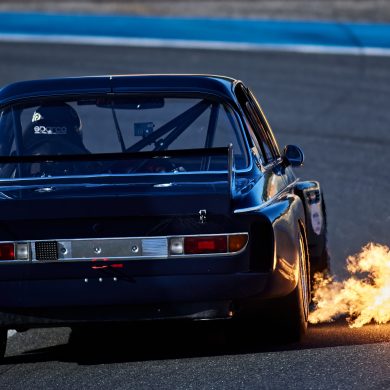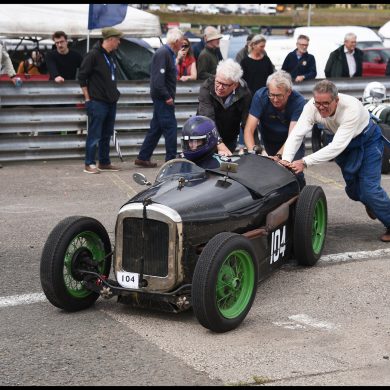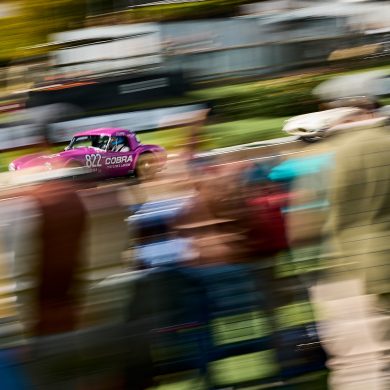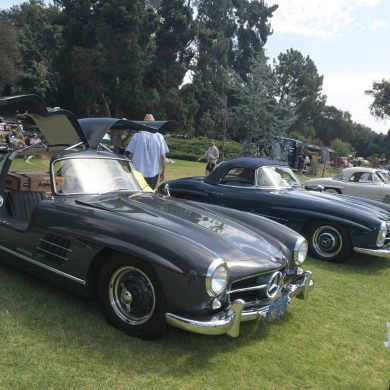The museum mobile in the Audi Forum Ingolstadt has organised a spectacular exhibition to commemorate the centenary of the Audi brand. For this unique event, which is entitled “From Horch to Audi – The history of perfection has a new name”, historic cars have been collected together from all over Europe.
From March 11 to July 16, 2009, visitors to the Audi museum mobile will be able to see thirteen cars dating from before the Second World War, including the first model to bear the Audi name, a 1911 Audi Type A, and a world premiere – the 1935 Audi 225 Front Special Roadster which was recently rebuilt. Both these cars, and many other exhibits as well, are the only examples to be seen anywhere in the world.
AUDI AG can look back on a very varied and often turbulent history. Before the end of the 19th century, August Horch established a company known as Horch & Cie. Motorwagen Werke in Cologne. In 1902 he moved it to Zwickau in Saxony, and in 1904 it was reorganized into a joint-stock company. In 1909, following a dispute with the members of the executive and supervisory boards, August Horch left the company and a few weeks later established a second automobile manufacturing operation, also in Zwickau. Since he could not use his own name, which was a registered brand, he chose a Latin translation instead: the German word “Horch!” (meaning “Listen!”) became “Audi”. The use of this Latin imperative was suggested by the son of one of August Horch’s business partners, a student of Latin, who had followed the discussion about a new name with interest. Car production began on a small scale, true to Horch’s basic principle of building only “good, strong cars”, but only a few years later Audi had already developed into one of the best-known German automobile brands. It enjoyed success in competition from the very start. Victories in Austrian Alpine Rallies between 1911 and 1914 made the Audi name familiar on the international scene. The Audi Type C 14/35 PS was especially successful, and acquired the name “Alpine Victor”.
The Audi museum mobile will be displaying no fewer than thirteen of the oldest Audi cars still in existence anywhere in the world. In order to present not only these historic vehicles but also any number of anecdotes from the company’s early days in a stimulating manner, including the years up to the major interruption in its activities caused by the Second World War, the exhibition’s organisers have adopted an unusual approach. The stories have become a storyboard, and this in turn takes the form of a comic strip. Each page deals with anecdotes, special occurrences and legendary landmarks in the Audi Company’s history. The choice of name, the dismissal of August Horch, the first eight-cylinder model, the pioneering adoption by Audi of left-hand drive in Germany, the competition for the first Audi radiator badge, acquisition by DKW and the subsequent creation of Auto Union – the chronicle continues until the point when, on the outbreak of war, Germany’s second-largest automobile manufacturer had to cease production of passenger cars for the general public. As Stefan Felber from the Audi museum mobile explains: “Audi’s history is far too exciting for a conventional form of presentation. We have aimed to make it easily comprehensible at first glance, and for children to understand it easily too.”
Car enthusiasts will welcome the chance to see outstanding examples from Audi’s early history, above all the timelessly elegant Audi Front Roadster, on display for the very first time. Only two specimens of this prototype were built in 1935, and both have disappeared. Audi Tradition therefore supplied an original chassis to the specialist Zinke Company in Zwönitz, which built a replica body with only photographs as a guide. Now this roadster, a “dream in white”, is making its world premiere at the Audi museum mobile. Another exceptional highlight is the Audi Type A, which dates 
The second-oldest exhibit, an Audi Type E built in 1913, also has a dramatic tale to tell. Its 55-hp engine, with a displacement of 5.7 liters, is the largest built by Audi during its Zwickau period. This model remained in production until 1924. Two examples are to be seen in the exhibition, one from the first and one from the final production batch. Although they have similar open tourer bodies, the changes introduced over an 11-year period can be clearly seen. The hero on the competition scene, however, is definitely the “Alpine Victor” – the Audi Type C, built from 1911 to 1925. With August Horch himself as one of the drivers, this car won the Austrian Alpine Rally, at that time the most challenging event of its kind, three times in succession, the last occasion being in 1914. The car on display dates from 1919 and is still in road going condition.
Audi recorded a number of technical milestones in 1923 with the Audi Type M, in its day one of Germany’s most luxurious and expensive cars. The engine had a light-alloy block and an overhead camshaft driven by a vertical shaft and bevel gears. An intake air cleaner was fitted. This Audi model was the first to have four-wheel brakes. The list price of 22,300 Reichsmarks was not within everyone’s reach: Three of the 228 cars sold have survived, and also an additional chassis. The car on display is a sectioned model intended to illustrate the outstanding technical features and workmanship of the car. The Audi Type M was followed by the first Audi eight-cylinder model, the Audi Type R “Imperator”, which broke through the symbolic hundred-horsepower barrier. The car on display was built in 1929, and is the only remaining example of this model anywhere in the world.
In 1931 Audi began to build the Type P, the first small car in the brand’s history. For many years it was believed that none had survived, until 2003, when one was found in a barn in Ludwigsburg. Its documents indicated that the last owner had been the mayor of a town in the Swabian region of Germany and that the car had been taken off the road in 1955, to spend almost half a century like Sleeping Beauty waiting to be reawakened. Following extensive restoration in Riga (Latvia), Audi Tradition is now able to display this unusual car again – the sole surviving Type P. This first major Audi centenary exhibition is rounded off by cars produced by the Auto Union after its establishment and up to 1940 – two different Audi Front 225 models dating from 1935 and the last Audi to appear before the outbreak of war, the 1939 Audi 920.
In 2009, the Audi brand established by August Horch on July 16, 1909 celebrates its centenary. The four rings of the Audi badge symbolize the brands Audi, DKW, Horch and Wanderer, which were combined to form Auto Union in 1932. Auto Union and NSU, which merged in 1969, both made many significant contributions towards the development of the car. AUDI AG was formed from Audi NSU Auto Union AG in 1985. Together with the two traditional companies Auto Union GmbH and NSU GmbH, Audi Tradition has nurtured the extensive, diverse history of Audi for many years and presented it to the public. The Audi museum mobile at the Audi Forum Ingolstadt is open daily from Monday to Sunday, from 9 a.m. to 6 p.m. The August Horch Museum in Zwickau is open from Tuesday to Sunday from 9.30 a.m. to 5 p.m.
[Source: Audi AG]









